Estate Jewelry: Ruby Roses and the Memento Mori
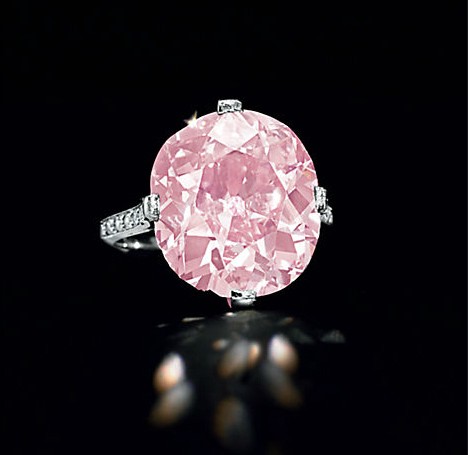
Wow. Okay, here goes: this is a modified cushion-cut 9-carat fancy vivid purplish-pink diamond, set in platinum with single-cut diamond prongs, gallery, and shoulders. The color is natural, and the stone is GIA-certified to be a Type IIa, which (as you’ll remember from my past ravings about Golconda diamonds) means it’s the most chemically pure and transparent form of diamond. The Type IIa designation is common to famous stones such as the Cullinan I (a.k.a. the Great Star of Africa) and the Koh-i-noor, both of which are part of the British Crown Jewels.
The ring dates to 1910 and was made by Dreicer & Co., which, for a short time (1904–1923), was one of the top luxury jewelry companies in the United States. They were particularly renowned for their ultra-high-end diamonds and pearls, but sadly the company was liquidated two years after the death of the founder’s son in 1921, and Cartier bought all of their remaining stock.
This ring (estimated at $6–8 million) is one of the highlights of the Magnificent Jewels auction to be held at Christie’s New York on April 17. It’s part of the estate of the reclusive heiress Huguette M. Clark, and the stone itself is believed to have originally belonged to Clark’s mother. Huguette’s story is odd but fascinating: she inherited millions from her father’s copper business and owned various amazing properties, but she removed herself from society while she was in her early thirties and was basically never heard from again. (You can read her obituary here.)
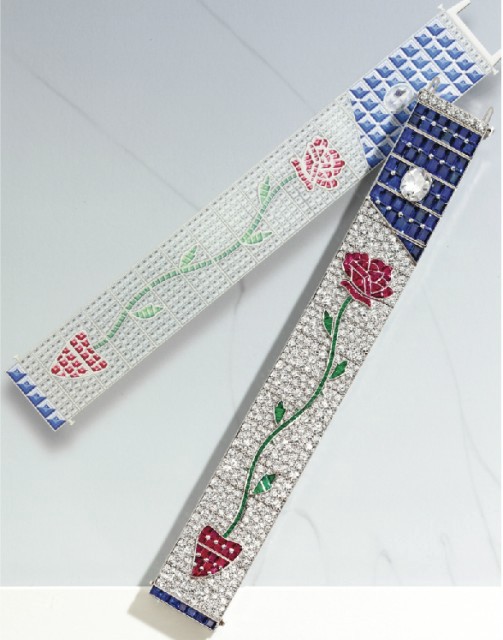
Sotheby’s is holding their Magnificent Jewels auction in New York on April 18. There are a great variety of items in this sale, with lots of 19th-century pieces mixed in with the usual mind-blowing gems (especially Cartier; don’t miss the c. 1920 carved emerald brooch).
This bracelet stands out to me, though, because it’s fairly recent Tiffany. Tiffany & Co. is a hugely polarizing brand these days; people either love it or hate it. Yes, their prices are insane, but that’s because they’re selling their name on that blue box just as much as the jewelry inside of it. They are, however, an extraordinary company, and a great American success story. I don’t think I’ve gone into their past too deeply here — one day I promise to tell you about Paulding Farnham, because OH MY GOD PAULDING FARNHAM — but to this day, Tiffany continues to produce some beautiful original jewelry.
This bracelet only dates to 2004. A sinuous rose of calibré-cut emeralds and buff-top rubies sits in a ruby vase, against a backdrop of the sapphire evening sky. The rest of the bracelet is set with round diamonds (total weight 21.28 carats), and the “moon” is a 2.53-carat oval rose-cut diamond. The stones are set in a flexible platinum band.
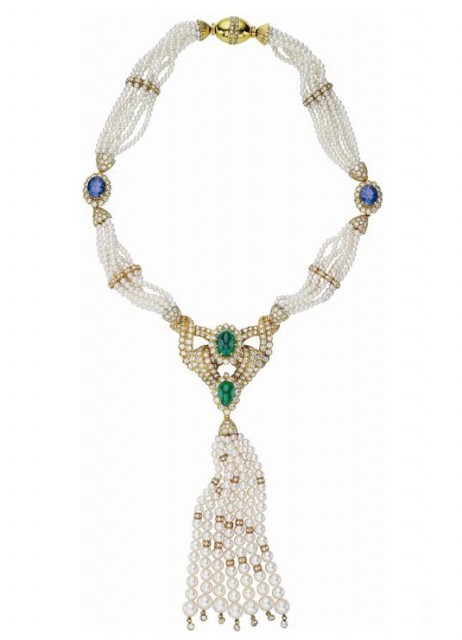
On April 19, Philips de Pury & Company are holding their “Jewels” auction. Again, there’s a ton of great stuff here, but I particularly love this necklace. Because you never know when you’ll need a little something to wear to dinner, right? Nothing too ornate or anything. The necklace is by Hammerman Brothers, a New York firm currently nearing their 75th anniversary (check out their website, if you’re a glutton for glorious punishment). This stunning cultured pearl and 18k tassel design highlights a central openwork panel of circular-cut diamonds and two cabochon emeralds. Swags of pearls lead up to a diamond-surrounded oval-cut sapphire at each shoulder, and finally culminate in a diamond-set clasp.
FYI, Doyle, Bonham’s, and Rago Arts are also holding jewelry auctions in April, so check them out. The Rago one is unreserved, so good buys could be made, and non-jewelry items (SUCH AS AMETHYST GEODES, EDITH) are also included.
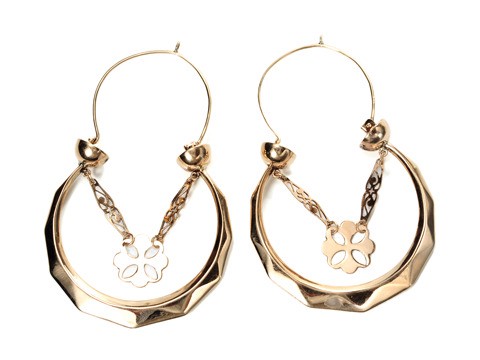
Okay, enough with the auctions! These late 18th-century earrings are an example of the “provincial” or country style that was once popular in Italy, Spain, and France. Made of gold, they feature a floral swag hanging within a large hoop.
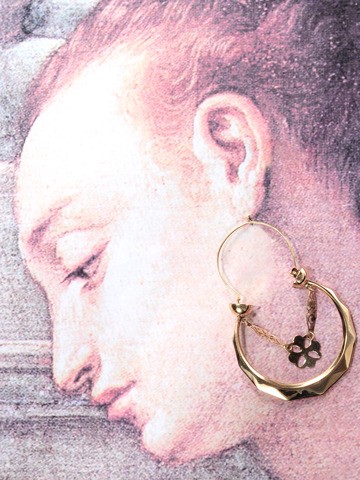
They’re HUGE but hollow, and as a result are very light, and they’ve been ingeniously designed to stay in place on the ear by a small loop that prevents the earring from shifting forward.
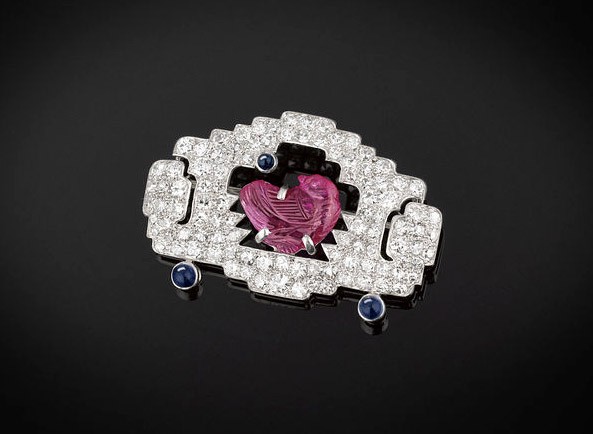
This whimsical little bird brooch is actually loaded with symbolism. During the German occupation of World War II, the “caged bird” became a common theme in Paris, as the residents of the city identified with the image of beautiful winged captives. Following the war, many of the luxury jewelers — Cartier, Boucheron, etc. — hailed the liberation of the city by creating pieces that featured an open cage. This Art Deco “Freedom of Paris” brooch is by Cartier, and features a 4.5-carat ruby bird perched on the edge of an open platinum cage set with 4.5 carats of diamonds and three cabochon sapphires.
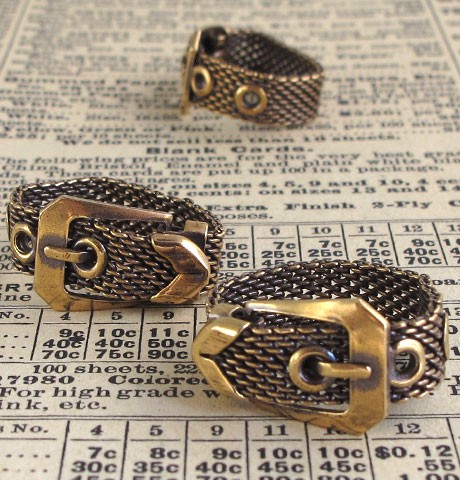
They’re not quite Cartier, but these flexible brass buckle rings are cute and vintage and they’re only $35! They’ve also been soldered closed, so they won’t fall off and make you sad.
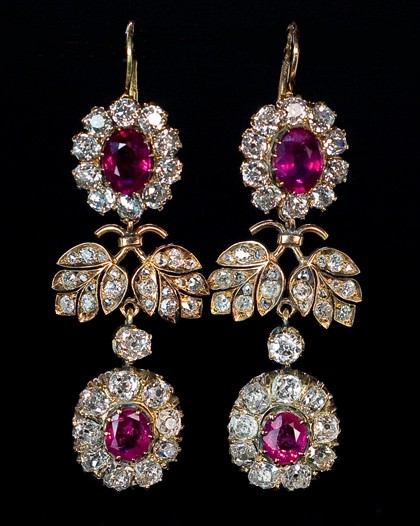
A news item recently got me daydreaming about turn-of-the-century Russian jewelry … Not all of it was made by Fabergé, but that doesn’t mean it wasn’t beautiful. Look at these earrings! Circa 1908–1917, they showcase four natural rubies (3.2 carats total weight) alongside 74 antique-cut diamonds (6.1 carat t.w.) in a 14k setting with a floral motif. They’re stamped with the mark of the workmaster and of the St. Petersburg assay office.
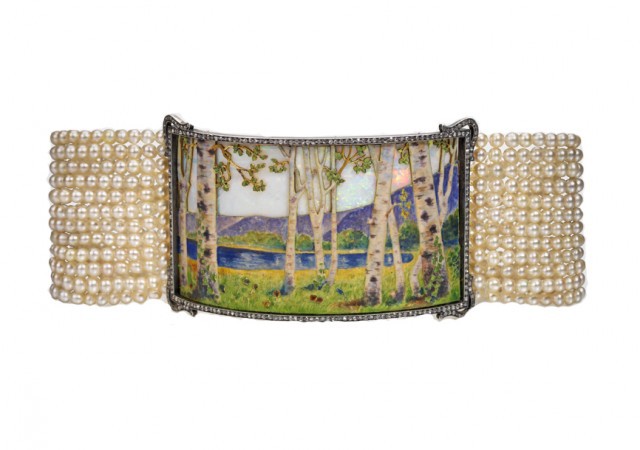
This beautiful Art Nouveau choker is by Koch, a successful family-run jewelry company that was popular with European royalty around the beginning of the 20th century. Founded in 1879 and based in Frankfurt, Germany, the Koch story ended in 1938, when the firm was “aryanized” and “sold” according to the Nazi policies of the time. This is almost unbearably sad, especially when we see the quality of their work.
Circa 1902, the choker is comprised of a rectangular silver-over-gold plaque that’s suspended by twelve rows of natural pearls, terminating in a diamond-set clasp. The plaque, which is bordered by rose-cut diamonds, depicts a beautiful spring landscape in enamel, with birch trees set against a backdrop of a lake and mountains, and an opal sky.
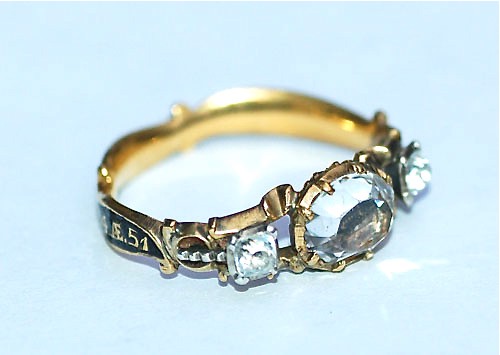
This variation on a memento mori skeleton ring features the skeleton on a black ground beneath the central crystal (rather than the usual skull or hair seen in rings of this type).
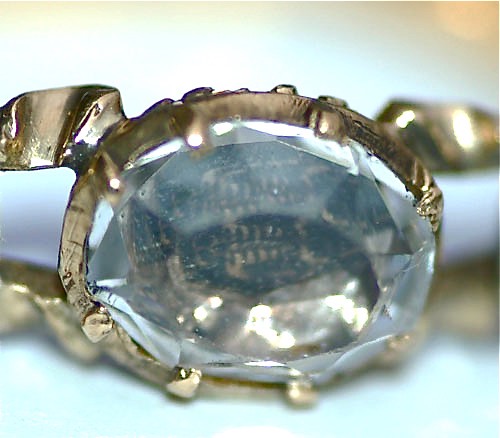
The band is a high-carat gold in a beautiful scrolled design with black enameling, and it memorializes the deceased: “J. Gardiner Ob. 19 May 1764 AE 51.” Two smaller crystals bookend the central crystal.
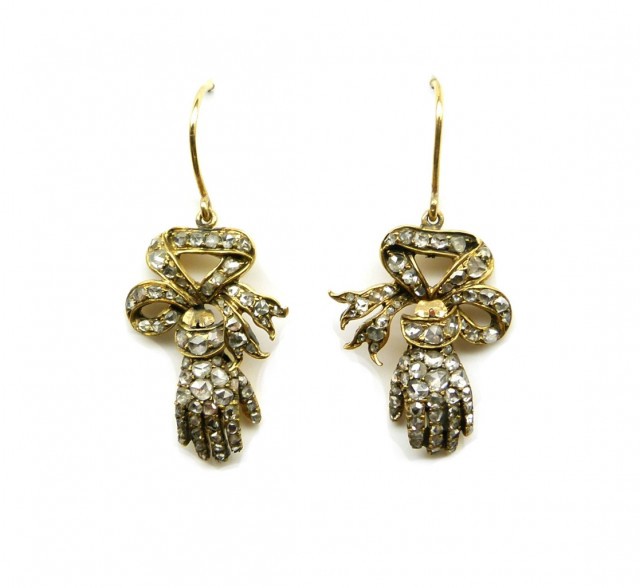
More whimsical little hand earrings! Oooh, I love it. These are circa 1770, with rose diamonds set in gold. The hands (with cuffs!) hang below beautifully fashioned off-center ribbon bows. Since the hands aren’t holding or pointing at anything, or positioned in any specific way, I think they’re probably simply decorative.
Previously: Witch Hearts and the Victorian Onyx Mystery.
Monica McLaughlin’s eyes get really tired during auction season.